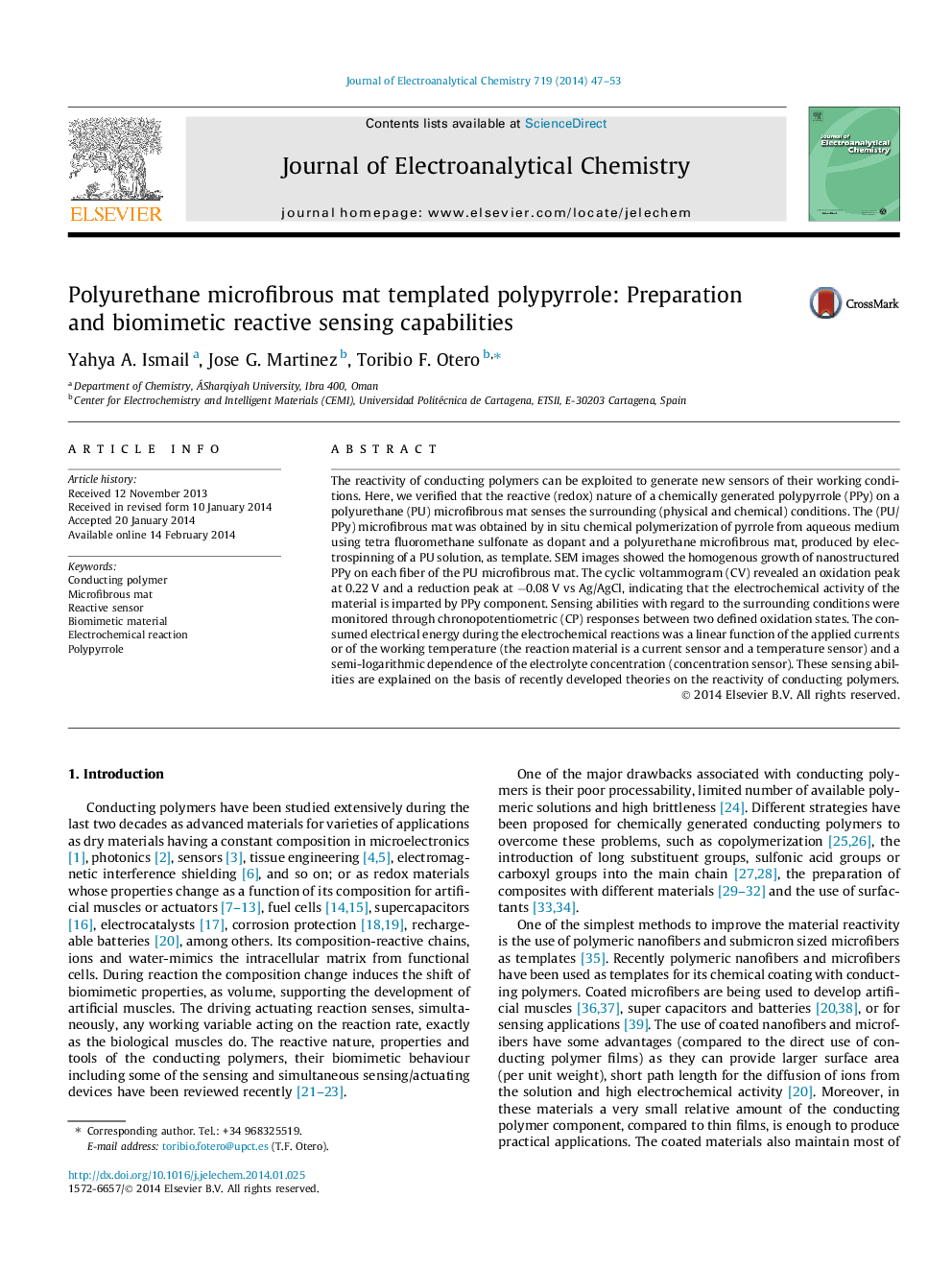| Article ID | Journal | Published Year | Pages | File Type |
|---|---|---|---|---|
| 218905 | Journal of Electroanalytical Chemistry | 2014 | 7 Pages |
•Electroactive PU/PPy microfibrous mats were fabricated.•The material-reactive gel, ions and water-mimics the intracellular matrix in cells.•The material senses, while reacting, the working physical and chemical variables.•The potential, or the consumed electrical energy, are the sensing magnitudes.•Any reactive (electrochemical) device driven by the reaction must sense the ambient while working.
The reactivity of conducting polymers can be exploited to generate new sensors of their working conditions. Here, we verified that the reactive (redox) nature of a chemically generated polypyrrole (PPy) on a polyurethane (PU) microfibrous mat senses the surrounding (physical and chemical) conditions. The (PU/PPy) microfibrous mat was obtained by in situ chemical polymerization of pyrrole from aqueous medium using tetra fluoromethane sulfonate as dopant and a polyurethane microfibrous mat, produced by electrospinning of a PU solution, as template. SEM images showed the homogenous growth of nanostructured PPy on each fiber of the PU microfibrous mat. The cyclic voltammogram (CV) revealed an oxidation peak at 0.22 V and a reduction peak at −0.08 V vs Ag/AgCl, indicating that the electrochemical activity of the material is imparted by PPy component. Sensing abilities with regard to the surrounding conditions were monitored through chronopotentiometric (CP) responses between two defined oxidation states. The consumed electrical energy during the electrochemical reactions was a linear function of the applied currents or of the working temperature (the reaction material is a current sensor and a temperature sensor) and a semi-logarithmic dependence of the electrolyte concentration (concentration sensor). These sensing abilities are explained on the basis of recently developed theories on the reactivity of conducting polymers.
Graphical abstractFigure optionsDownload full-size imageDownload as PowerPoint slide
